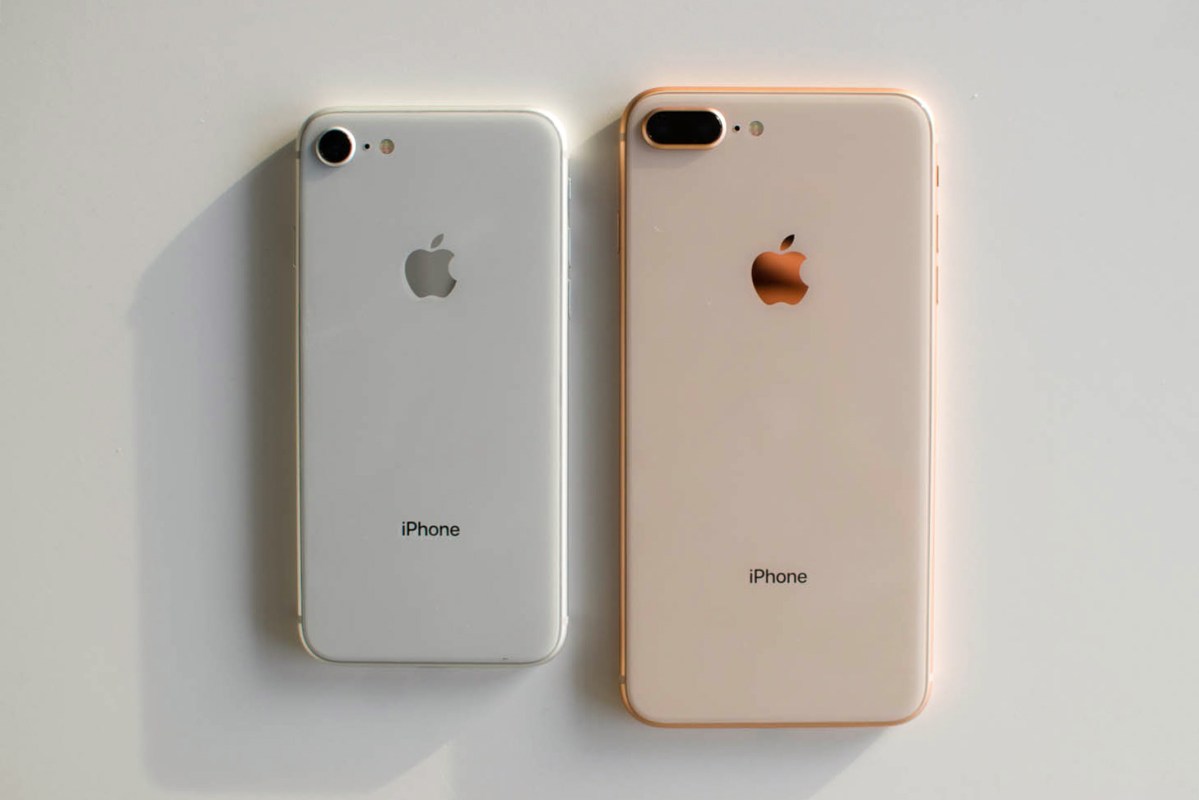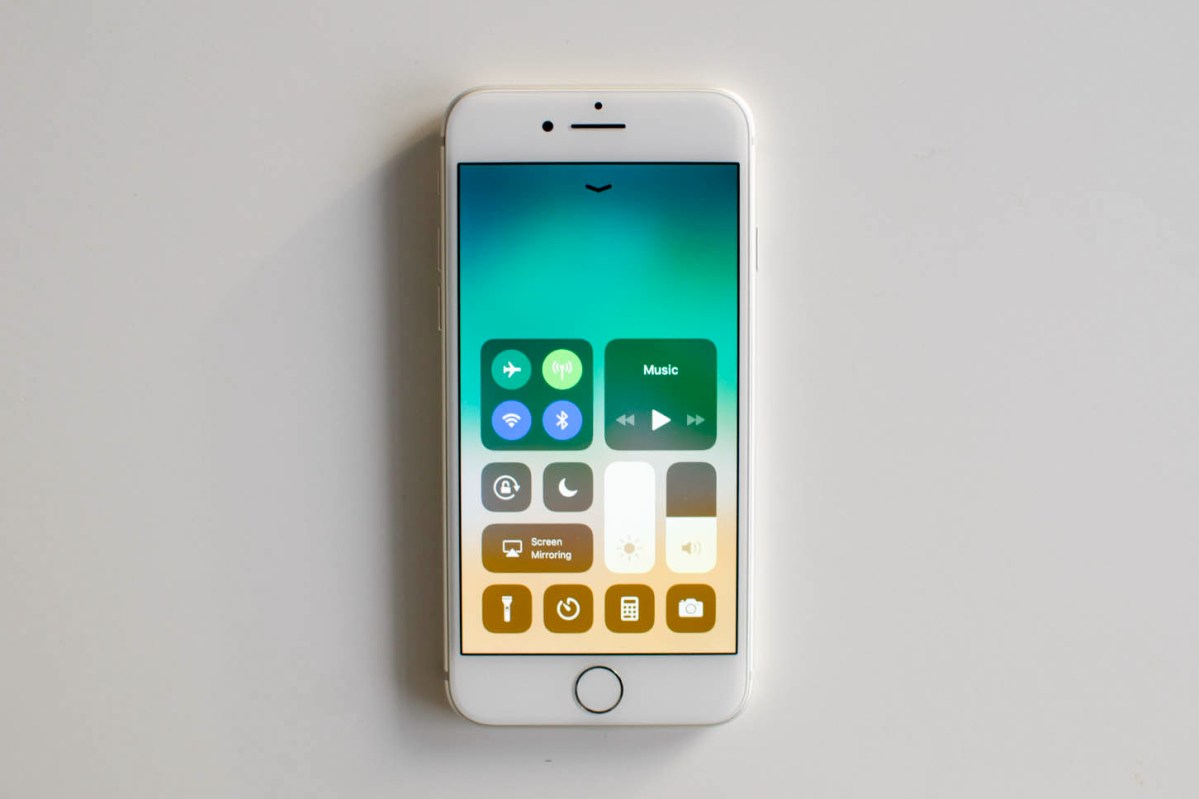- Speedy processor
- Class-leading camera
- Wireless charging
- Slick software
- Dated design
- Fast charging costs extra
Editor’s note: Apple recently cut the price of the iPhone 8 to $450, and it’s now the company’s most affordable iPhone. It offers speedy performance, and iOS remains a slick, intuitive operating system. However, the phone’s camera and design is a bit behind the latest Android budget phones, like the Samsung Galaxy A50.
Looking for a great price on the iPhone 8? Check out our favorite Black Friday iPhone deals.
Of all the iPhone releases in the decade following the 2007 original, the iPhone 8 has probably generated the least excitement. There’s a very good reason for that: The iPhone X. Apple’s nomenclature sends a very clear message: The best iPhone you can get isn’t the iPhone 8, or even its big brother, the iPhone 8 Plus, but the iPhone X (pronounced “ten”). And you don’t have to wait two years for it, because it’s here now.
Despite the glamorous allure of an edge-to-edge OLED display and futuristic-feeling facial recognition functionality, not everyone will be persuaded to part with $1,000 or more for the iPhone X. For now, whether you’re on the upgrade cycle from the iPhone 6S or just looking for a more affordable iPhone, the iPhone 8 is for you. As our review shows, it may be refinement, rather than revolution, but it’s a damn good phone all the same.
A refined design that feels dated
Apple unveiled the iPhone 6 back in 2014, and it has stuck with the same basic design since then. The internal components have improved with every iteration, the screen became pressure-sensitive with 3D Touch, the home button morphed into the recessed TouchID, and we lost the headphone jack along the way. But every iPhone since the iPhone 6 has almost identical dimensions and a very similar look.
The iPhone 8 is a fraction bigger than its predecessors, but close enough that iPhone 7 cases fit perfectly. The big change is that the aluminum back has given way to glass, making it slightly heavier in hand – 10 grams heavier to be precise. We’re told that it’s the most durable glass ever, but iPhone 8 cases are advisable to avoid expensive repairs.

You have a choice of three colors: Silver, Gold, and Space Gray. At first glance, the Space Gray appears black, but look closer and you’ll see that the glass is tinted dark gray. The Silver is much as you’d expect, and the Gold has a peachy tint to it.
The ugly antenna bands have been reduced to small strips at the top and bottom of each side. You’ll find the power button and SIM card tray on the right spine, and the volume controls and switch on the left. The Lightning port on the bottom edge is flanked by a speaker and microphone, and there’s nothing up top. There’s no triumphant return for the 3.5mm audio port, but Apple includes a Lightning to 3.5mm headphone jack adapter in the box.
It may be refinement, but it’s a damn good phone all the same.
A mirrored Apple logo sits front and center on the back of the phone, and the camera and flash jut out from the top left. This “camera bump” is another reason to invest in a case, otherwise the iPhone is always resting on the camera when you lay it down on its back.
The iPhone 8 feels solid and expensive, slightly more so than the iPhone 7. It’s a comfortable size to slip into a pocket and it’s one of the best phones on the market for easy one-handed operation.
Apple has refined this design over the last three years, so it’s highly polished. But familiarity breeds contempt, and when you look at the front of the iPhone 8, it’s hard not to feel some disappointment at just how familiar it is.
Screen and sound
The fact that Apple is buying into the bezel-less trend in such a big way with the iPhone X makes the big bezels on the iPhone 8 harder to explain. For innovation in design and display over the last couple of years, you must look to Apple’s main rival, Samsung, because it popularized edge-to-edge screens and OLED technology. And it was LG that pioneered the elongated aspect ratio that makes larger screens manageable one-handed.
When Apple jumped onboard with these trends, it tacitly admitted that the iPhone 8 design is out of date. The main refinement on the front of the iPhone since the iPhone 6 came out is the evolution of the home button, but it remains unchanged from the iPhone 7. While TouchID continues to work extremely well, we would have liked to see more focus on the screen.

Just look at the numbers. The iPhone 8 measures 5.45 × 2.65 inches, but it only has a 4.7-inch screen with a resolution of 1,334 × 750 pixels. The Galaxy S9, by contrast, measures a very comparable 5.81 × 2.7 inches, yet manages to pack in a 5.8-inch display with a resolution of 2,960 × 1,440 pixels. In case you’re wondering, the iPhone X measures 5.65 × 2.79 inches, and also has a 5.8-inch display, but with a resolution of 2,436 × 1,125 pixels.
Apple tacitly admitted that the iPhone 8 design is out of date.
The only real boost to Apple’s IPS LCD is the addition of True-Tone technology which is designed to tweak the look based on the lighting of your environment to ensure colors are consistent. But it’s tough to see any real difference without holding an iPhone 7 next to it.
Having said all that, the iPhone 8’s display is bright, legible in a variety of lighting conditions, and probably the best IPS LCD around. It’s comfortable to read on for long periods, movies and games look detailed, and iOS 11 looks great. But, ultimately, it’s simply not as sharp as virtually every other display in this price bracket, and it has some of the biggest bezels around.
One welcome improvement is the updated stereo speakers, which make the phone 25 percent louder than the iPhone 7. There’s a bit more bass and it sounds great for a phone, but most people will still want to use headphones. We’re pleased to see Apple has added Bluetooth 5 support, so if you go the wireless route, you’ll find it’s better, faster, and supports a longer range than Bluetooth 4.2 in the iPhone 7.
Powerful performance that’s ahead of the pack
While the design and display remain largely unchanged, the iPhone 8 is packing some serious cutting-edge hardware under the hood. Apple’s new A11 Bionic chip is incredibly fast. It combines two high-performance cores with four high-efficiency cores and has an Apple-designed GPU inside.
We found the iPhone 8 to be slick and speedy in navigation, apps, and games. Nothing we threw at it made a dent, whether it was an incoming call during a game of Asphalt 8: Airborne, which it handled gracefully, or jumping out of Netflix to read an email, the iPhone 8 took everything in its stride. Make no mistake, this is a powerful device.

When we ran Geekbench 4, the iPhone 8 managed a single core score of 4,270 and a multi core score of 10,259, compared to the Galaxy S8 which managed 1,762 single core, and 5,723 multi core, and the HTC U11 which hit 1,926 single core and 6,493 multi core. Even the newer Galaxy S9 only scored 2,377 single core and 7,982 multi core.
Running the AnTuTu benchmarking tool, the iPhone 8 scored 214,492. That compares to 155,253 for the Galaxy S8 and 175, 748 for the HTC U11, though the Galaxy S9 bests it on 261,876.
Whatever way you slice it, the iPhone 8 is one of the most powerful phones around.
Whatever way you slice it, the iPhone 8 is one of the most powerful phones around. In fact, it has the same chip as the iPhone 8 Plus and the iPhone X, so there is no compromise on performance here. Whether you’ll feel any real benefit is harder to say, because we never had any problems with the performance of the iPhone 7, or even with Android phones like the HTC U11. The iPhone 8 will probably age more gracefully, but right now we think you’ll struggle to find ways to take advantage of all that raw power.
Apple has put an extra 1GB of RAM in its larger iPhones, but the iPhone 8 gets by just fine on 2GB of RAM as far as we can tell. It’s not directly comparable with Android phones, which tend to have a lot more RAM, because the operating systems deal with memory management very differently.
The only time we felt any strain was during a session of augmented-reality gaming. There was no stutter or lag, but games like The Machines and Zombie Gunship Revenant AR chewed through the battery quickly and made the glass back very warm to the touch.
Class-leading camera
We were excited to take the iPhone 8 camera out for a spin. Although the iPhone 8 lacks the dual-camera set-up that you’ll find in the iPhone 8 Plus and iPhone X, it’s still one of the best cameras we’ve used.
The iPhone 8 has a 12-megapixel main camera with an f/1.8 aperture, optical image stabilization, and HDR. It’s designed to be easy to use; just point and shoot and more often than not, you’ll get a pleasing photo. We tried it out in a variety of different lighting conditions, indoor and out, and can confidently say it takes great shots.
HDR is on all the time now and Apple has definitely tweaked colors to increase the saturation compared to the iPhone 7, though they’re still a lot more realistic and natural than something like the Galaxy S8. Low-light performance is improved, but it’s one of the few areas where the iPhone 8 can be outclassed. You will find noise and exposure issues in some low-light photos.
Smartphone cameras have improved so much in the last couple of years, but Apple mostly remains on par with the best competitors can offer. The iPhone 8 matches its peers in most situations, surpassing in a few and falling short in others, but as time moves on and cameras continue to improve, there are better performers available.
Just point and shoot and more often than not, you’ll get a pleasing photo.
Checking in with independent photography experts, DxOMark, we find that the previous joint top phones – the Pixel and the U11 on scores of 90 – were knocked off the top spot by the iPhone 8, which scored 92. A number of phones have overtaken it since then, including the Google Pixel 2 on 98, the Samsung Galaxy S9 Plus on 99, and the Huawei P20 Pro on 109. Apple’s iPhone X scored 97 and the iPhone 8 Plus scored 94, both benefiting from a dual-lens camera that boosts zoom capability and affords a strong bokeh effect.
Based on our own testing, we agree that all of those phones have better cameras than the iPhone 8, but we’re not talking about a huge gulf in class. It’s a shame that you don’t get Portrait Mode on the iPhone 8, or the snazzy Portrait Lighting feature that the iPhone 8 Plus has, but we don’t think most people will really miss them.
The iPhone 8 can also record 4K video at up to 60 frames per second and 1080p video at up to 240fps, which makes it more capable than the vast majority of flagships. There’s a 7-megapixel front-facing camera with an f/2.2 aperture to round things out and it will serve just fine for FaceTime calls and selfies.
Daily charging made easier
Battery life is an area where Apple really needed to play catch up, so it’s disappointing to find that the iPhone 8 has an even smaller battery than its predecessor at 1,821 mAh. Thankfully, that disappointment is mitigated by the fact that Apple has added fast-charging support, so you can charge up 50 percent of the battery in 30 minutes. There’s also wireless charging support through the Qi standard, made possible by the new glass back.
Sadly, the smile may be quickly wiped from your face when you realize that the charger in the box is the same old 5W/1A affair that shipped with last year’s iPhone. If you actually want to enjoy fast charging then you have to pay an extra $35 for a USB-C to Lightning cable and you’ll need an Apple 29W, 61W, or 87W USB-C Power Adapter. If you don’t have one of those – they come with some iPads and MacBooks — then you’ll have to buy that too. They start from $50 for the 29W version.
Having to pay an extra $85 on top of the $700 you already paid for the iPhone 8 is ridiculous to get a feature that’s standard on every other smartphone at this price and many that are far cheaper. Go with third-party chargers and you won’t have to pay quite as much, but Apple should really be providing fast charging kit in the box.
Having to pay an extra $85 on top of the $700 you already paid for the iPhone 8 is ridiculous.
We were pleased to find that the Qi wireless charging works just fine with our array of wireless charging pads. If you don’t have one, you’ll be glad to learn that you can get a decent one for less than an Apple power adapter. Being able to place your iPhone 8 on a pad on the nightstand or in your car and have it charge, albeit slowly, is very convenient. It was only able to draw 5W on release, but Apple’s iOS 11.2 software update has since increased that to 7.5W.
For heavy users the iPhone 8 will require at least daily charging. On an average day of mixed use it should make it to bed time, but you’ll probably want to institute an overnight charging routine. If you don’t watch movies or play games on your phone, then a couple of days is not completely out of the question.
We found the AR games we played were a particular drain, easily consuming 30 percent in just half an hour or so of game time. On the other hand, our iPhone 8 lasted a day and night out on the town with plenty of camera use and, by turning on low-power mode, we got home to an outlet the next day before it completely died.
Warranty information
You get a standard one-year warranty from Apple, starting from the date of purchase, that covers the iPhone 8 for manufacturing defects. It does not cover you for any accidental damage or liquid damage. For $130 you can take out AppleCare+ which extends the warranty for an additional year and reduces two incidents of accidental damage to a nominal fee. For example, a cracked screen will cost $30 to replace instead of $150.
The iPhone 8 comes with 64GB for $700 or with 256GB of storage for $850. You can buy it unlocked directly from the Apple Store, or pick one up from any of the major U.S. carriers.
Our Take
This is an incremental update over the iPhone 7 and, as good as it is, we’re not convinced it merits a jump of $50 in the starting price. If Apple could have put a 5-inch OLED with a 1080p resolution into this body, it would have been easy to recommend the iPhone 8, but with the iPhone X available, it’s a much tougher sell.
Is there a better alternative?
Yes. If you’re set on an iPhone, then you should really check out the iPhone 11. It sports an exciting new design, a much larger and sharper OLED screen, a superior dual-camera, and all-new facial tracking features that we’ve never seen before, all in a package that isn’t much bigger than the iPhone 8. Although, it will cost you an extra $250.
Want an Android alternative? Check out the Google Pixel 3a or Asus ZenPhone 6. These newer, mid-range phones offer better hardware and more modern design for your money.
How long will it last?
If you do opt for the iPhone 8, we think it will last you a good long while. Apple will continue to update it for years to come and the cutting-edge processing power definitely offers some future-proofing. You could easily use the iPhone 8 for up to four years, or use it for two or three years and then sell it for a decent price. It is IP67 rated, so the odd dunk won’t be a problem, but we would advise a case to guard against scratches and cracks.
Should you buy it?
If you still love your iPhone 6 or 6S and you want to upgrade without spending too much, or you want a smaller phone without compromising on power, then the iPhone 8 is going to tick all your boxes. But if you want the best iPhone, buy the iPhone 11.
You can also go through our lists for the best iPhone deals and smartphone deals if you want discounted options.












